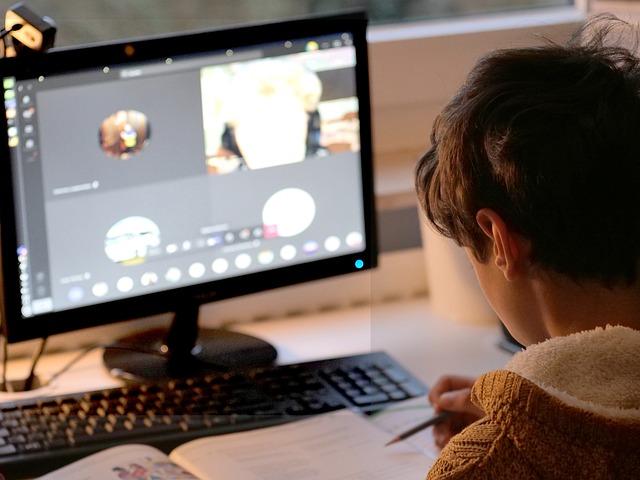Why Video Calls Are the New Norm for Personal and Professional Messaging
The transition from traditional methods of communication, such as letters and phone calls, to digital interactions has been swift and remarkable. For instance, video calls were once a novelty but have become a staple in our daily lives, enabling face-to-face interactions regardless of geographical barriers.
There are many factors behind the shift toward video communication, and this article explores them and how video calls are reshaping the way we interact informally and professionally in today's digital age.
The Revolution is Here: From Letters and Email to Video
Each advancement as communication evolved brought us closer to instant, real-time interaction, and video-calling technology was a significant milestone in that journey. It allowed us to see and hear others despite geographical distance, and early platforms like Skype set the stage for more sophisticated tools.
As technology advanced, the widespread availability of high-speed internet, smartphones, and webcams made video calls more accessible and reliable. New platforms like Zoom, Microsoft Teams, and Google Meet emerged, offering user-friendly interfaces and robust features.
The COVID-19 pandemic was also a catalyst, accelerating the adoption of video calls as people sought ways to stay connected while adhering to social distancing measures. Thus, video calling became the norm for remote work, virtual gatherings, and online learning.
Impact of Video Calling Technology on Personal Messaging
Video calls have revolutionized personal connections, making it easier for families, friends, and long-distance relationships to stay close.
The ability to see and hear loved ones in real-time adds a layer of intimacy that phone calls and texts lack. It even makes meeting new people online more practical than when the world relied on emails and short text messaging. For example, video chat with Emerald allows you to make friends without leaving home.
In addition, the convenience and accessibility of video calls have also contributed to their popularity for casual conversations. Platforms like FaceTime and WhatsApp allow users to start video calls with just a few taps on their smartphones. This ease of use ensures that video communication is always within reach, enhancing everyday interactions.
Group video calls also enable more engaging and meaningful conversations because they reduce feelings of loneliness and provide crucial emotional support, especially during challenging times. Whether celebrating special occasions, sharing important news, or simply catching up, group video calls bring a sense of community.
One of the most exciting aspects of video calls is the ability to work on joint art projects. Friends and family members can connect via video call to draw, paint, or craft together. This real-time interaction allows immediate feedback, idea sharing, and collaborative creation, making the artistic process more engaging and interactive. Additionally, video calls provide an excellent platform for organizing and participating in virtual events.
Impact on Professional Communication
The rise of remote work has dramatically increased the need for better communication tools, with video calls emerging as a critical solution. One of the primary advantages of video calls in professional settings is the ability to observe non-verbal cues.
Facial expressions, gestures, and body language play a significant role in communication, providing context and enhancing understanding. Thus, video calls become more engaging and effective than audio-only calls or emails. The following are other reasons video calls suit a professional communication setting:
Enhanced Collaboration and Efficiency
Video calls facilitate real-time collaboration by allowing participants to share screens, documents, and virtual whiteboards. This immediacy ensures all team members are on the same page, speeds up decision-making, and reduces the time spent on lengthy email threads.
Cost Savings
By eliminating the need for travel, video calls significantly reduce expenses related to flights, hotels, and other travel-associated costs. Thus, businesses can reallocate these savings toward critical areas like technology upgrades or employee development. Moreover, less travel means less time spent out of the office, allowing employees to remain more productive and focused.
Global Connectivity
Video calls break down geographical barriers, allowing companies to connect with remote employees, clients, and partners across the globe. This capability is crucial for businesses looking to expand their market reach and tap into international talent pools. It also helps maintain strong relationships with global stakeholders.
Flexibility and Work-Life Balance
Video conferencing provides flexibility for employees, enabling them to work from various locations, including their homes. This flexibility supports a better work-life balance and can enhance job satisfaction and employee retention. It also enables freelancers and contractors to work in multiple roles in different companies.
Conclusion
The technological advancements of recent years have paved the way for video communication to become an integral part of our lives. For personal communication, it's possible to reconnect with long-lost friends through video calls using a phone number connected to platforms like WhatsApp or social media accounts on platforms that allow video calls.
Businesses are also gaining from these developments as team collaboration is better and more efficient with video rather than text messaging and emails.

